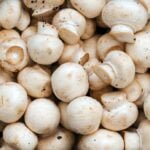Can you recommend some beginner-friendly mushroom species for home cultivation?
Can you recommend some beginner-friendly mushroom species for home cultivation?
Looking to delve into the exciting world of mushroom cultivation at home? You’re in luck! Mushroom cultivation is a fascinating and rewarding hobby, and there are several beginner-friendly mushroom species that are perfect for home cultivation. In this comprehensive guide, we will explore two popular and easy-to-grow mushroom species, namely oyster mushrooms (Pleurotus ostreatus) and button mushrooms (Agaricus bisporus). With a track record of successful cultivation in Southern Africa using locally available substrates like grass, maize stalks, and sawdust, these species are ideal for beginners. So, get ready to embark on a journey of growing your own delicious and nutritious mushrooms!
1. Oyster mushrooms (Pleurotus ostreatus):
With their mild and delicate flavor, oyster mushrooms are not only a tasty choice but also one of the easiest species for beginners to cultivate at home. Their versatility allows them to be used in various dishes, making them highly sought after. Here’s a step-by-step breakdown of how to grow oyster mushrooms in the comfort of your home:
Step 1: Acquiring mushroom spawn
To begin cultivating oyster mushrooms, you will need to obtain mushroom spawn. Mushroom spawn essentially consists of mushroom mycelium and can be purchased from online suppliers or local farmers’ markets. Ensuring you source high-quality spawn is crucial for successful cultivation.
Step 2: Preparing the substrate
Oyster mushrooms thrive on various substrates, such as straw, wood chips, sawdust, and agricultural waste like corn stalks or wheat straw. Proper preparation of the substrate is key to removing potential competitors and creating the optimal conditions for oyster mushroom growth. For detailed instructions on substrate preparation, consult mushroom cultivation books or online resources.
Step 3: Inoculation
After preparing the substrate, it’s time to inoculate it with the mushroom spawn. This process involves mixing the spawn with the substrate in a clean and sterile environment. The mixture is then placed into containers, such as plastic bags with small ventilation holes to ensure sufficient airflow.
Step 4: Incubation
The inoculated substrate now needs a warm and humid environment for the mycelium to colonize it. This crucial step, known as incubation, typically takes around 2-3 weeks. Keep the containers away from direct sunlight and maintain appropriate temperature and humidity levels to foster the mycelium’s growth.
Step 5: Fruiting
Once the mycelium has fully colonized the substrate, it’s time for the mushrooms to fruit. Fruiting requires exposing the substrate to fresh air and providing the right conditions for growth, including suitable light levels and humidity. Within a couple of weeks, you should notice mushroom pins forming, which will eventually develop into mature mushrooms ready for harvest.
2. Button mushrooms (Agaricus bisporus):
Button mushrooms, also known as white mushrooms or champignons, are another beginner-friendly species that can be easily cultivated at home. Known for their mild flavor and versatility, they are widely used in various culinary dishes. Here’s a step-by-step guide on how to grow button mushrooms in your own home:
Step 1: Acquiring mushroom spawn
Just like with oyster mushrooms, sourcing high-quality button mushroom spawn is crucial for successful cultivation. Look for reliable suppliers either online or at local mushroom farmers’ markets to acquire your desired spawn.
Step 2: Choosing the substrate
Button mushrooms can be grown on a wide range of organic materials, including compost, straw, horse manure, or a mixture of these. Proper composting techniques are essential to create the ideal conditions for the growth of button mushrooms. Ensure you follow the correct procedures to eliminate any potential contaminants.
Step 3: Spawning and casing
Once your compost is ready, mix it with the mushroom spawn. The spawn and compost mixture are then placed into appropriate containers, such as trays or mushroom bags. On top of the mixture, add a layer of soil or peat moss known as casing. This layer provides the necessary moisture and essential nutrients for fruiting.
Step 4: Incubation and fruiting
The spawned and cased substrate requires a dark and cool environment during incubation. Maintaining proper temperature control is crucial throughout this stage. After approximately two weeks, you can initiate the fruiting stage by providing the right conditions, including increased light levels, proper ventilation, and maintaining the humidity around 80%.
Step 5: Harvesting and maintenance
As the button mushrooms grow, ensure optimal conditions of temperature, humidity, and light levels to facilitate optimal fruiting. Harvest the mature mushrooms by twisting or cutting them at the base of the stem. After each harvest, replenish the substrate with fresh compost to stimulate further fruiting.
Conclusion:
For beginners venturing into the world of mushroom cultivation, oyster mushrooms and button mushrooms offer excellent choices. These species are relatively straightforward to grow at home and provide a harvest of delicious and nutritious mushrooms. Remember to obtain high-quality mushroom spawn, prepare the appropriate substrate, and provide ideal conditions for incubation and fruiting. With patience, knowledge, and proper care, you’ll soon be reaping the rewards of your homegrown mushrooms in various culinary creations. Happy growing!
Keywords: beginner-friendly mushrooms, home cultivation, oyster mushrooms, button mushrooms, mushroom species




